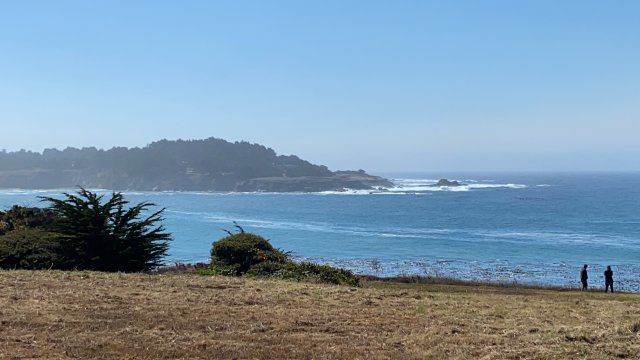The picturesque Northern California coast. Tourists flock to the region to enjoy the giant redwoods and Pacific Ocean waves crashing on the rocky cliffs.
"We're in a really bad situation," said Ryan Rhoades, superintendent of the Mendocino City Community Services District.
The tourist town of Mendocino is just feet away from the largest water reservoir on the planet, the Pacific Ocean, but it is running out of water.
The megadrought gripping the western United States is drying up major water reservoirs like Lake Mendocino. It normally is 131 feet deep and now is expected to be emptied by December.
"We have over 420 privately owned wells within one square mile. Imagine 420 straws of various lengths in one glass of water. You know, my job is to keep as many of those straws in the water for as long as possible," said Rhoades.
Many of those old hand-dug wells no longer reach into the aquifer, and those that do cannot draw enough water to support the houses, restaurants, and bed and breakfasts. The town has implemented a 40% water reduction, but it has not alleviated the issue.
Teddy Winslow stresses each day when she arrives at her restaurant, the GoodLife Cafe and Bakery. She checks her water tank and backup water tank to make sure she has enough water to operate her business.
"We're on the edge of closing for a day here and there to recover every day," said Winslow.
The well for her restaurant also supplies water to other businesses and apartments in her building.
The lack of water has forced Winslow to change how she does business. She's had to spend thousands of dollars each week to buy water delivered from trucks hauling it in from more than an hour away.
She, like other business owners, has had to close their public toilets because there is not enough water to flush them. The city has placed portable toilets throughout town for the tourists to use.
The tourists are the lifeblood of the town. They visit for the beautiful vistas and to enjoy the old Victorian homes. Many of those homes have been converted to restaurants, bars, and bed and breakfasts. Those businesses are drawing more water than originally planned from the aquifer.
"They're here and we're dependent on them. So, we have to figure out ways to help them survive and be sustainable," said Rhoades.
Rhoades says the city needs at least 40 inches of rain between October and April to recharge the aquifer. But it's going to take more than that to avoid a drought like this again next year.
"We're going to need a couple of robust years even to kind of bring the reservoir storage conditions back up," said Erik Ekdahl, deputy director of California's Division of Water Rights.
The long-term weather forecast predicts average precipitation at best.
"There is a solution; it is not an easy solution," said professor Samuel Sandoval, a water accountant at UC Davis. "There are no longer silver bullets, but we will have a suite of silver solutions."
Sandoval is advocating for more reservoir and aquifer storage, increasing wastewater reuse and reassigning how much water goes to businesses and farms.
Business owners like Winslow are questioning the future of their businesses.
"It makes me question the value of the business if I were to think about, you know, ever selling it, what is it worth without water?"
In Mendocino, officials are searching for solutions including building a desalination plant. But, the town is unincorporated and doesn't have water distribution pipes under the city streets, so a plant alone wouldn't solve the problem.




